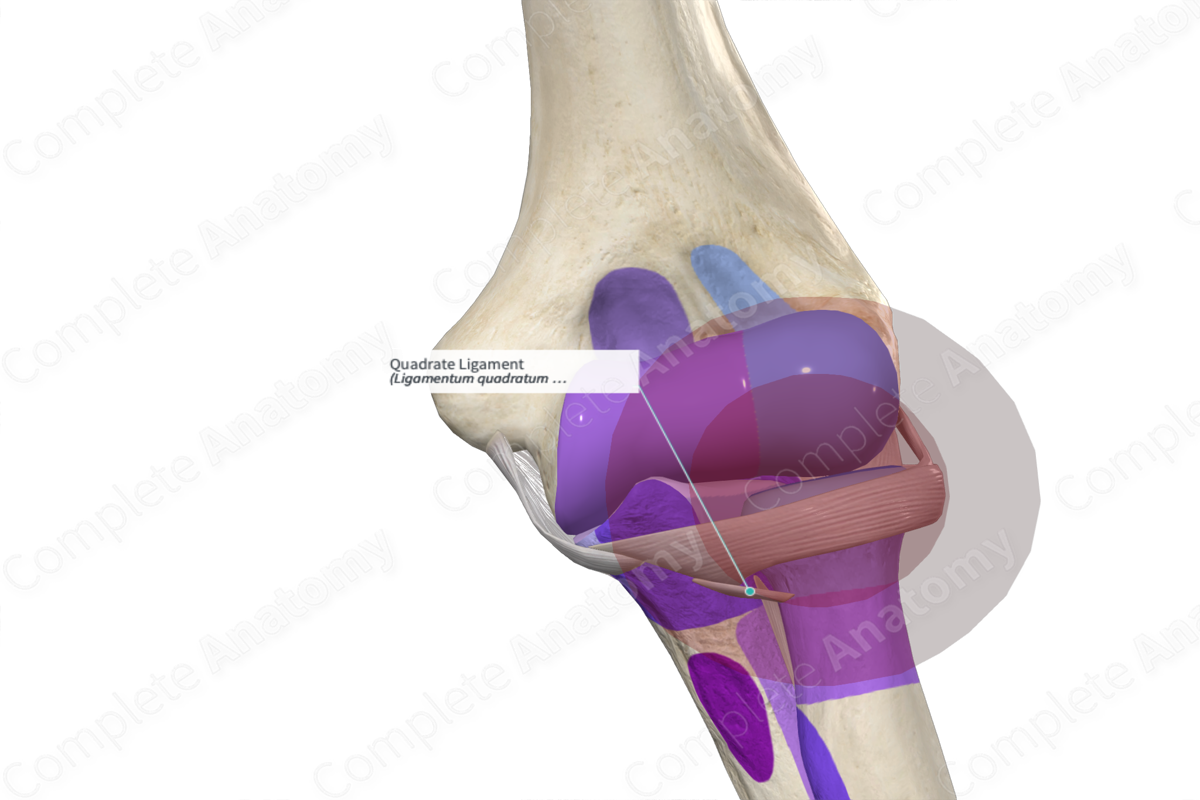
Quadrate Ligament Anatomical Relations
The quadrate ligament attaches from the distal margin of the radial notch of the ulna to the neck of the radius. It extends over the synovial membrane on the distal surface of proximal radioulnar joint.
Related parts of the anatomy
Quadrate Ligament Structure
The quadrate ligament of the elbow joint is much thinner than the annular ligament of the elbow joint but is more fibrous.
Quadrate Ligament Function
The quadrate ligament of the elbow joint helps secures the head of the radius to the ulna. It additionally resists excessive supination and pronation of the forearm (Tubbs et al., 2006).
Quadrate Ligament References
Tubbs, R. S., Shoja, M. M., Khaki, A. A., Lyerly, M., Loukas, M., O'Neil J, T., Salter, E. G. and Oakes, W. J. (2006) 'The morphology and function of the quadrate ligament', Folia Morphol (Warsz), 65(3), pp. 225-7.
Learn more about this topic from other Elsevier products
Elbow

The elbow is a ginglymus or hinge joint formed between the distal humerus and the proximal end of the radius and ulna and is restrained by collateral ligaments medially and laterally.



